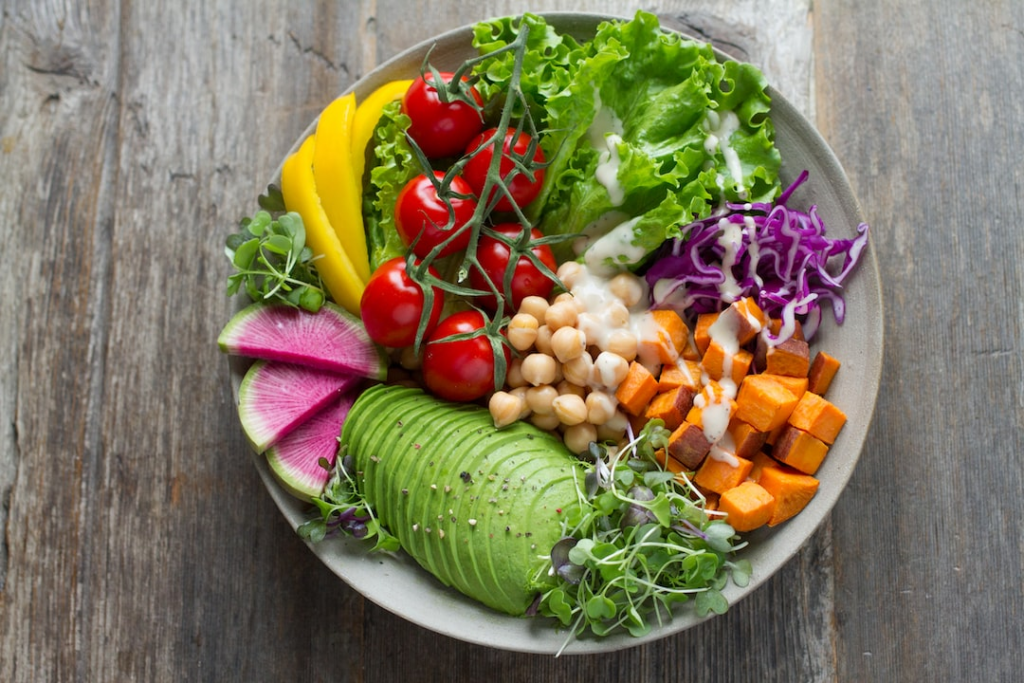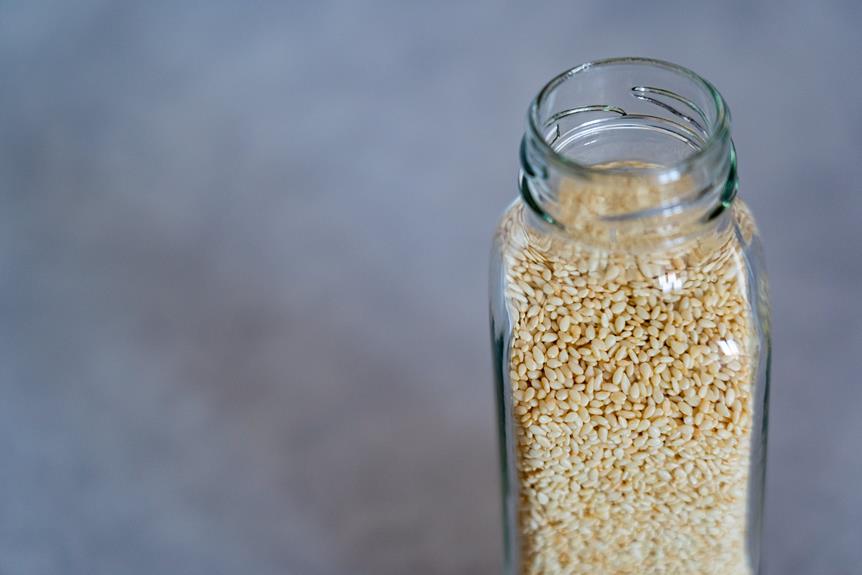Meal planning is a crucial aspect of maintaining a balanced diet and overall health. By carefully considering the nutritional content of each meal, individuals can ensure that they are meeting their dietary needs and consuming a variety of essential nutrients.
With proper meal planning, it becomes easier to avoid overly processed or unhealthy foods, leading to improved energy levels, better weight management, and overall well-being.
We’ll cover everything from setting goals and understanding your nutritional needs to incorporating variety and practicing portion control. Each step is designed to guide you toward healthier eating habits.
Let’s uncover the secrets to successful meal planning for a balanced diet.

Importance of Meal Planning
Meal planning is essential for maintaining a balanced diet and achieving your health and wellness goals. By planning your meals, you can have better control over what you eat. This ensures that you include all the necessary nutrients and avoid unhealthy options.
Meal planning saves you time in the long run. By preparing and portioning your meals ahead of time, you eliminate the need to cook every day, saving valuable time and energy.
To make the most of your meal planning, try these time-saving tips:
- Choose recipes that can be made in bulk and frozen
- Prepare ingredients in advance
- Get creative with leftovers to create new meals
Incorporating these strategies into your meal planning routine allows you to enjoy the benefits of a balanced diet while saving time and effort.
Setting Goals for a Balanced Diet
To achieve a balanced diet, it’s important to set clear and realistic goals that align with your health objectives. Goal setting is a powerful tool that helps you stay focused and motivated on your journey towards a balanced diet.
When setting goals, be specific and realistic. Instead of saying ‘I want to eat healthier,’ set a goal like ‘I will eat at least five servings of fruits and vegetables every day.’ This gives you a clear target to work towards.
To track your progress, it’s helpful to keep a food diary or use a mobile app to record your meals and snacks. Tracking progress not only keeps you accountable but also helps you identify patterns and make adjustments as needed.
Rewarding yourself when you reach a goal can provide a sense of accomplishment and motivation to continue making healthy choices. Remember, setting small, achievable goals is key to maintaining a balanced diet in the long run.
Understanding Nutritional Needs
Understanding your nutritional needs is crucial for achieving a balanced diet. By knowing about calorie intake, macronutrients, and micronutrients, you can make informed decisions about the foods you eat.
Calorie intake refers to the energy your body requires to function properly. It’s important to find a balance between the calories you consume and the calories you burn through physical activity. This balance is essential for maintaining a healthy weight.
Macronutrients are the nutrients your body needs in large quantities. They include carbohydrates, proteins, and fats. Carbohydrates provide energy, while proteins help with tissue building and repair, and fats aid in nutrient absorption and hormone production.
On the other hand, micronutrients are the nutrients your body needs in smaller amounts. They include vitamins and minerals. Vitamins play a crucial role in various bodily functions, while minerals support bone health and regulate bodily processes.
To better understand your nutritional needs, take a look at the table below:
| Nutrient | Function | Sources |
|---|---|---|
| Carbohydrates | Provide energy | Whole grains, fruits, vegetables |
| Proteins | Build and repair tissues | Meat, fish, dairy products |
| Fats | Aid in nutrient absorption and hormone production | Avocados, nuts, olive oil |
| Vitamins | Essential for bodily functions | Fruits, vegetables, fortified foods |
| Minerals | Support bone health and regulate bodily processes | Dairy products, leafy greens, nuts |
Choosing the Right Ingredients
Now that you know your nutritional needs, it’s time to focus on choosing the right ingredients for a balanced diet. Making mindful choices when it comes to the food you eat is important for your overall health. Here are some meal prep ideas and healthy substitutions to help you create delicious and nutritious meals:
- Choose whole grains: Swap out refined grains like white rice and white bread for healthier options like quinoa, brown rice, and whole wheat bread. These provide more fiber and nutrients, keeping you feeling full for longer.
- Include lean proteins: Opt for lean meats such as chicken breast, turkey, or fish instead of fatty cuts of meat. If you’re following a plant-based diet, beans, lentils, and tofu are great sources of protein.
- Load up on fruits and vegetables: Incorporate a variety of colorful fruits and vegetables into your meals. These provide essential vitamins, minerals, and antioxidants that support your overall health.
- Use healthy fats: Swap out saturated and trans fats with healthier alternatives like olive oil, avocado, nuts, and seeds. These fats are good for your heart health and provide important nutrients.
Incorporating Variety in Meals
To make your meals more interesting and ensure you’re getting a variety of nutrients, try incorporating a range of different ingredients and flavors. By exploring new recipes and cuisines, you can discover unique flavor combinations and expand your culinary repertoire.
Here are some examples of ingredients and flavors from various cuisines:
- Mexican: Avocado, cilantro, lime – Spicy, tangy, savory
- Italian: Basil, tomatoes, garlic – Rich, herby, aromatic
- Thai: Coconut milk, lemongrass – Sweet, sour, spicy
- Indian: Turmeric, cumin, cardamom – Warm, aromatic, spicy
Incorporating these ingredients and flavors into your meals can add diversity and excitement to your diet. Don’t be afraid to experiment and step out of your comfort zone. Trying new recipes and exploring different cuisines not only keeps your meals interesting but also exposes you to a world of flavors and cultures.
Portion Control and Serving Sizes
Maintaining a balanced diet and getting the right nutrients requires paying attention to portion control and serving sizes. Portion control is essential for healthy eating as it helps manage calorie intake and prevents overeating. Here are four tips to help with portion control:
- Use smaller plates and bowls: Opt for smaller dishware to create the illusion of a fuller plate. This can help you feel satisfied with smaller portions.
- Measure your food: Use measuring cups, spoons, or a food scale to accurately measure your portions. This prevents unknowingly consuming larger servings.
- Prioritize veggies: Make vegetables the star of your plate. They’re low in calories and high in nutrients, allowing for larger portions without excessive calorie intake.
- Be mindful of liquid calories: Beverages like soda, juice, and alcohol can contribute to excess calorie intake. Stick to water, unsweetened tea, or infused water to quench your thirst without adding unnecessary calories.
Preparing Meals in Advance
Preparing meals in advance can save you time and make healthy eating easier. Two effective strategies for this are batch cooking and meal prepping.
Batch cooking involves making larger portions of a recipe and storing them for later use. This allows you to cook once and have multiple meals ready to go, saving you time during the week. It also helps with portion control, as you can divide the meals according to your needs.
Meal prepping takes it a step further by planning and preparing your meals for the whole week. This can involve chopping vegetables, marinating meat, or cooking grains ahead of time. This not only saves time but also reduces the temptation to reach for unhealthy takeout or convenience foods.
Incorporating batch cooking and meal prepping into your routine can give you a sense of control and organization over your meals. It allows you to make healthy choices proactively and ensures that you always have nourishing options available.
Tips for Grocery Shopping Wisely
Maintaining a balanced diet and preparing meals in advance requires wise grocery shopping. Follow these tips to maximize your meal budget and discover healthy recipe ideas.
- Plan your meals: Before going to the store, create a meal plan for the week. This helps you stay focused and avoid impulse purchases. Look for recipes that use similar ingredients to minimize waste and save money.
- Make a list: Write down everything you need before shopping. This keeps you organized and prevents you from forgetting essential items. Stick to your list and avoid getting distracted by tempting treats or unnecessary snacks.
- Shop the perimeter: The outer aisles of the grocery store have fresh produce, lean proteins, and dairy products. Fill your cart with nutrient-rich foods from these sections before exploring the inner aisles, which often have processed and unhealthy options.
- Compare prices: Take time to compare prices and brands. Look for sales or discounts on items you regularly use. Consider buying in bulk when it makes sense, as this can save you money in the long run.
Tracking Progress and Making Adjustments
To ensure you stay on track with your balanced diet goals, it’s important to regularly track your progress and make necessary adjustments. Tracking progress allows you to see how far you’ve come and identify areas that need improvement.
One way to track your progress is by keeping a food journal. Write down everything you eat and drink throughout the day, including portion sizes. This will help you see patterns and identify any unhealthy eating habits. You can also use smartphone apps or online tools to track your calorie intake and nutrient levels.
In addition to tracking your food intake, it’s important to track your physical activity. Record the type and duration of your workouts, as well as any other physical activities you engage in. This will give you a clear picture of how active you are and help you evaluate if you need to increase or decrease your exercise routine.
Once you’ve tracked your progress, it’s time to make adjustments. Refer to the table below to help you identify areas where you can make changes to improve your balanced diet. Remember, small adjustments can make a big difference in achieving your goals.
| Aspect of Diet | Tracking Progress | Making Adjustments |
|---|---|---|
| Portion Sizes | Notice if you consistently eat too much or too little. | Adjust portion sizes to ensure you meet your calorie and nutrient needs. |
| Macronutrient Ratios | Monitor your intake of carbohydrates, proteins, and fats. | Adjust ratios to achieve the recommended balance for your body. |
| Fruit and Vegetable Intake | Track how many servings of fruits and vegetables you consume daily. | Increase the number of servings if you’re not meeting the recommended amount. |
| Water Intake | Keep track of how much water you drink throughout the day. | Adjust your intake to ensure you’re adequately hydrated. |
| Snacking Habits | Note if you snack excessively or make unhealthy choices. | Replace unhealthy snacks with nutritious options or reduce snacking frequency. |
Conclusion
By taking the time to plan your meals, you’re setting yourself up for success in achieving a balanced diet. Meal planning ensures that all the necessary nutrients come together harmoniously to nourish your body, like a well-orchestrated symphony.
Grab your grocery list and get ready to embark on a delicious adventure, where you’re in control of your health and well-being.








